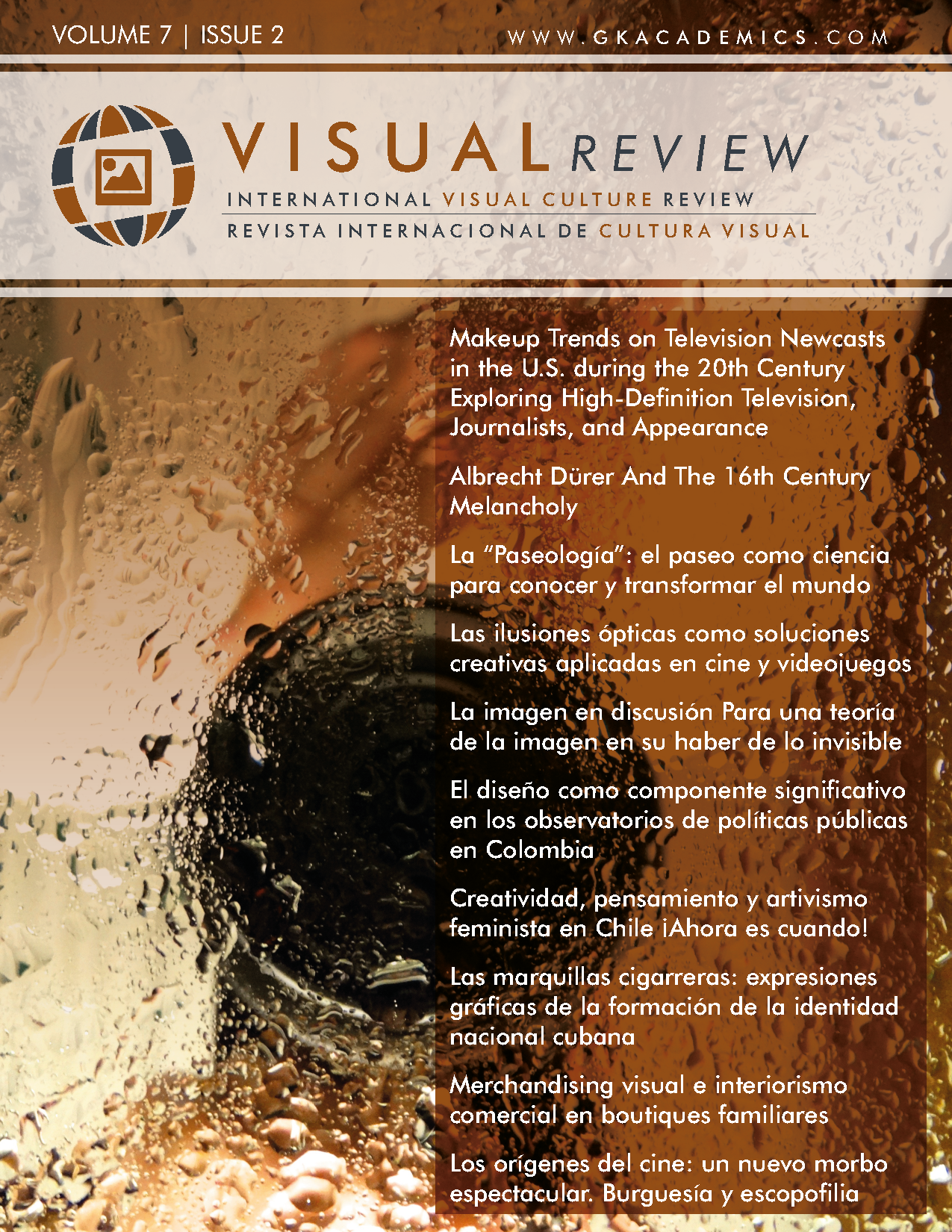Albrecht Dürer And The 16th Century Melancholy
DOI:
https://doi.org/10.37467/gka-revvisual.v7.2695Palabras clave:
Melancholy, 16 century Renaissance, NeoplatonismResumen
Little has been discussed in academia about the close relationship between the Renaissance of the 16th century and melancholy humor, and esoteric elements arising mainly from Florentine Neoplatonism. The link between melancholy and esotericism becomes very clear when we analyze the gravure “Melencolia I” by Albrecht Dürer (1471-1528), composed of a significant number of symbols that refer to an esoteric religious culture that then emerged. Renaissance melancholy gained several nuances. On the one hand, it was considered a sin, a despicable mood characteristic of witches; on the other hand, a deep sense of inspiration typical of men of “genius”. This ambivalence also occurred in the firmament, as the melancholic people were guided by the dark planet Saturn, according to astrological belief. We also have the cultural scenario of the 16th century, especially in Dürer's Germany, which contributed to strengthening the melancholy issues.
Descargas
Estadísticas globales ℹ️
|
1045
Visualizaciones
|
837
Descargas
|
|
1882
Total
|
|
Citas
Agrippa, C. (2012). Três livros de filosofia oculta. São Paulo: Madras.
Alcides, S. (2001). Sob o Signo da Iconologia: Uma Exploração do Livro Saturno e a Melancolia, de R. Klibansky, E. Panofsky e F. Saxl. Revista Topoi, 2(2). Disponível em: http://www.revistatopoi.org/numeros_anteriores/topoi03/topoi3a5.pdf. Acesso em: 10 out. 2019. DOI: https://doi.org/10.1590/2237-101X0002003005
Aristóteles. (1998). O homem de gênio e a melancolia. Rio de Janeiro: Lacerda.
Ball, P. (2009). O médico do demônio: Paracelso e o mundo da magia e da ciência renascentista. Rio de Janeiro: Imago.
Burton, R. (2011). A anatomia da melancolia. V. I. Curitiba: Editora UFPR.
Burton, R. (2012). A anatomia da melancolia. V. III. Curitiba: Editora UFPR.
Cassirer, E. (2001). Indivíduo e cosmos na filosofia do Renascimento. São Paulo: Martins Fontes.
Delumeau, J. (1984). A civilização do Renascimento. V.II. Lisboa: Editorial Estampa.
Febvre, L. (2009). O problema da incredulidade no século XVI. São Paulo: Companhia das Letras.
Hautecoeur, L. (1963). História geral da arte: da realidade à beleza-I. São Paulo: Difusão Européia do Livro.
Klibansky, R.; Panofsky, E.; Saxl, F. (2012). Saturno y la melancolía. Madrid: Alianza Forma.
Mann, N. (2006). Renascimento. Barcelona: Folio.
Panofsky, E. (2005). Vida y arte de Alberto Durero. Madrid: Alianza Forma.
Paula, M. (2014). Pode o conhecimento dar alguma alegria? Kriterion, 55(130), pp. 597-618. Disponível em: http://www.scielo.br/scielo.php?script=sci_arttext&pid=S0100512X2014000200009&lng=en&nrm=iso. Acesso em: 17 set. 2019. DOI: https://doi.org/10.1590/S0100-512X2014000200009
Rezende, J. (2009). À sombra do plátano: crônicas de história da medicina. São Paulo: Editora Unifesp. DOI: https://doi.org/10.7476/9788561673635
Warburg, A. (2013). A renovação da antiguidade pagã: contribuições científico-Culturais para a História do Renascimento Europeu. Rio de Janeiro: Contraponto.
Yates, F. (1995). Giordano Bruno e a tradição hermética. São Paulo: Cultrix.
Descargas
Publicado
Cómo citar
Número
Sección
Licencia
Los autores/as que publiquen en esta revista aceptan las siguientes condiciones:
- Los autores/as conservan los derechos de autor.
- Los autores/as ceden a la revista el derecho de la primera publicación. La revista también posee los derechos de edición.
- Todos los contenidos publicados se regulan mediante una Licencia Atribución/Reconocimiento-SinDerivados 4.0 Internacional. Acceda a la versión informativa y texto legal de la licencia. En virtud de ello, se permite a terceros utilizar lo publicado siempre que mencionen la autoría del trabajo y a la primera publicación en esta revista. Si transforma el material, no podrá distribuir el trabajo modificado.
- Los autores/as pueden realizar otros acuerdos contractuales independientes y adicionales para la distribución no exclusiva de la versión del artículo publicado en esta revista (p. ej., incluirlo en un repositorio institucional o publicarlo en un libro) siempre que indiquen claramente que el trabajo se publicó por primera vez en esta revista.
- Se permite y recomienda a los autores/as a publicar su trabajo en Internet (por ejemplo en páginas institucionales o personales), una vez publicado en la revista y citando a la misma ya que puede conducir a intercambios productivos y a una mayor y más rápida difusión del trabajo publicado (vea The Effect of Open Access).













